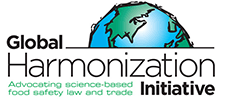As food scientists and engineers, we all have books on our shelves that we think of as “essential reading.” These useful volumes allow us to tap into the scientific knowledge and expertise of our colleagues from around the world whenever needed. Books in the GHI Series, published under Elsevier’s Academic Press imprint, are written with that aim in mind: to be part of your essential reading when you’re looking for science-based information about the globalization harmonization of food safety laws and regulations.
With the success of the first book in the GHI Series, “Ensuring Global Food Safety – Exploring Global Harmonization,” in mind, it is my pleasure to suggest adding the second book, Regulating Safety of Traditional and Ethnic Foods, to your food safety science and technology library. Published in November 2015 and edited by GHI members V. Prakash, Olga Martin-Belloso, Larry Keener, Sian B. Astley, Susanne Braun, Helena McMahon and Huub Lelieveld, the book looks at a variety of traditional and ethnic foods from around the world through the lens of food safety practices and regulations.
We know that traditional and ethnic foods have traveled beyond the borders of their cultural birthplaces, and that such foods—from kimchi to borsh to fermented cassava—are now available all over the world. However, many consumers doubt the safety of food coming from other countries or those that are prepared in a traditional way that is unknown to them. In theory, food can be safe in one place but may not be safe for people living somewhere else. Scientifically correct information about the safety of traditional and ethnic foods is difficult to find, and regulators tend to be very careful when developing rules involving foods for which they do not have evidence-based data.
This is why we invited scientists from all over the globe to write about the food traditions in their region and how the food is prepared from a food safety perspective. Regulating Safety of Traditional and Ethnic Foods has become a unique book, with 46 authors from 17 countries discussing virtually all types of food – including flowers and insects – and the many ways of preparation and processing, including drying, smoking, boiling, frying and fermenting . Of course, the book discusses the regulatory aspects and the desirability of harmonizing food safety regulations related to traditional and ethnic foods around the world.
Having published about the safety aspects of regulating traditional and ethnic foods, GHI is in the early stages of planning a related book series that will discuss the nutritional and health aspects of these foods. In addition to detailing the regulatory aspects such as harmonized labeling, these books will be the first ever to describe traditional and ethnic foods in terms of historical and cultural use, geography, preservation and storage, modern production approaches, and environmental and sustainability. The series will cover all countries in the world and is expected to consist of 26 volumes.
In the meantime, please do visit the Elsevier bookstore to view the table of contents and learn a bit more about the editors. We hope that you will make this the latest addition to your food safety bookshelf!


